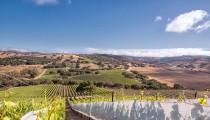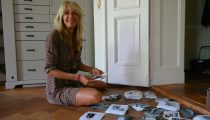Who: Amir Kassaei – Advertiser Where: Berlin – Prenzlauer Berg…
At home with artist Mia Florentine Weiss
Who: Mia Florentine Weiss, Performance Artist
Where: Berlin

Performance artist Mia Florentine Weiss lives and works in this restored former warehouse in Berlin
When I visited the performance artist Mia Florentine Weiss last week in her Berlin studio, I had to watch my steps. On the floor: an in groups ordered, artistic mess of glassware, photographs and picture frames: Preparations for Mia’s new exhibition ‘Wunderkammer’, which starts in Berlin this weekend.* In between exhibits of previous projects such as the just-ended solo exhibition in the Senckenberg Museum in Frankfurt. The in Wuerzburg born artist commutes between Berlin, Frankfurt and Los Angeles. Since the birth of her son in 2014, Berlin is the center of life. Here she lives with her husband and child since one and half years in a former warehouse, idyllically situated beside the River Spree. The hall-like industrial loft – divided into living and work area – was lovingly restored by Mia and her husband.
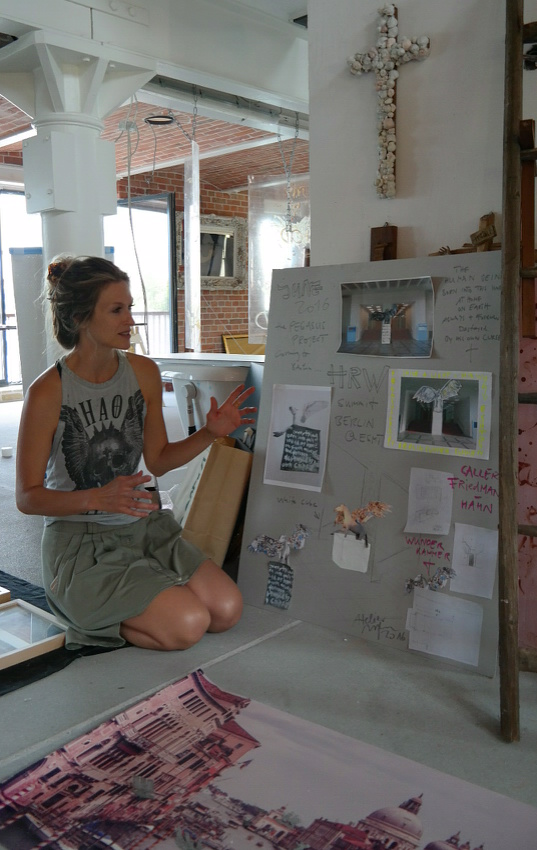
Mia explains the concept of the Pegasus project, which can be seen this weekend in the former State Council building of the GDR in Berlin
MyStylery: In your studio it looks like a lot of work, dear Mia …
Mia Florentine Weiss: Tell me more! I could be relaxing on the sofa in the evenings. Instead, I arrange the bones and limbs of porcelain figurines in night shifts.
MS: Wunderkammer is your new exhibition. That sounds exciting …
MFW: In the Renaissance, there were to be found Wunderkammern in all the courts and royal houses where anomalies and curiosities were issued. Cabinets, that represented the universal connection of all things as a unity of art, nature and science. The new exhibition is a spatial installation of curiosities, objets trouvés and photographs.
MS: What can I expect there? More-headed monsters and three-eyed dragons?
MFW (laughs): Expect to be thrilled. The exhibition is an extension of my ,Pegasus’-sculpture, a symbol of escape and hope that will be shown during the ‘Global Council Summits’ of Human Rights Watch this weekend in Berlin. In the former State Council building of the GDR, which was once the residence of Erich Honecker. What an irony!
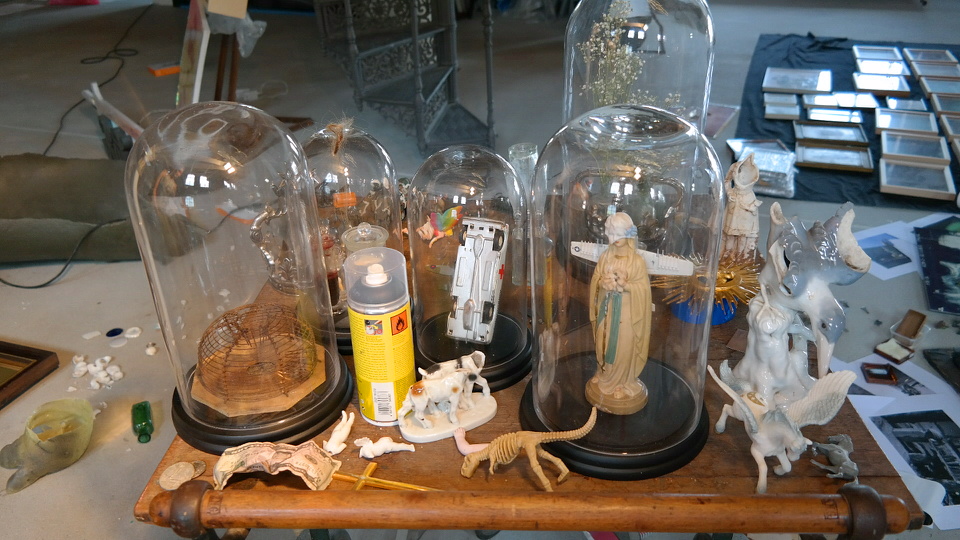
Curiosities and objets trouvés, which are shown in the ‘Wunderkammer’ exhibition …
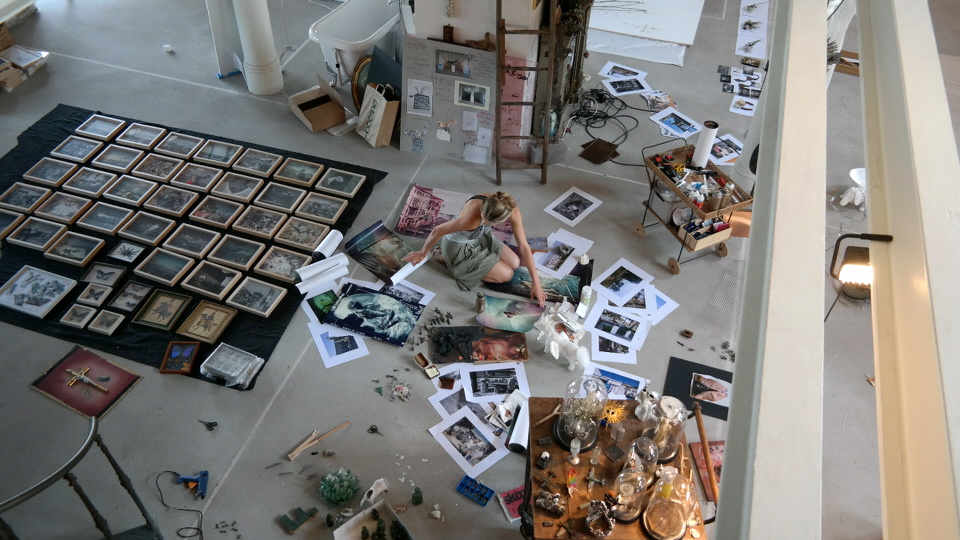
… and various photographs
MS: Why has a natural history museum shown a contemporary artist with polarizing work?
MFW: The visitors should open new horizons: Nature meets culture. And I seemed to be the only artist who served this interface of tradition and modernity, human and machine, life and transience. Pegasus was not just Greek mythology and the winged horse, but represents differentness that does not correspond to the prevailing standard.
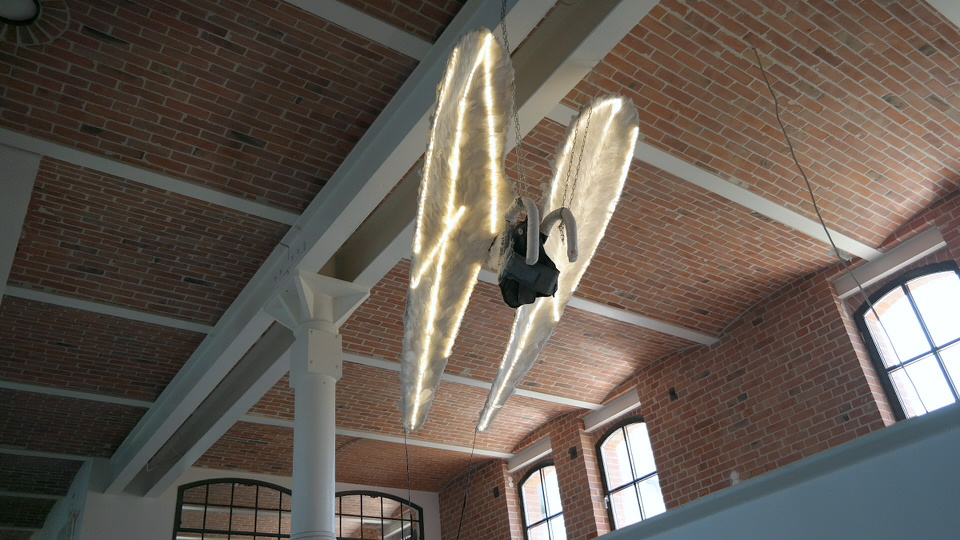
The wings of Mia’s performance ‘Art Angel’ 2011-2012 in Los Angeles
MS: After high school you went to travel the world in the late 90s for a year, where you already collected the first objects. Have you already been aware of your artistic ambitions back then?
MFW: From every major city – whether Denpasar or Nairobi – I sent a big box with artefacts home during my Work and Travel Journey. I knew I would fall back again to these things. Just as the special collection of African dragonflies of my grandmother, which my mother gave me at graduation. I should take good care of it, she said to me then.
MS: And how was her reaction when she discovered the fireflies in your work?
MFW: Kinda like my father when he looked at the ,Pegasus’ in the Senckenberg Museum: Ah, that’s Grandpa’s! Oh, I’ve been looking for this all the time … Even my confirmation bracelet is plugged in ,Pegasus’ and many other personal items that mean something to me.
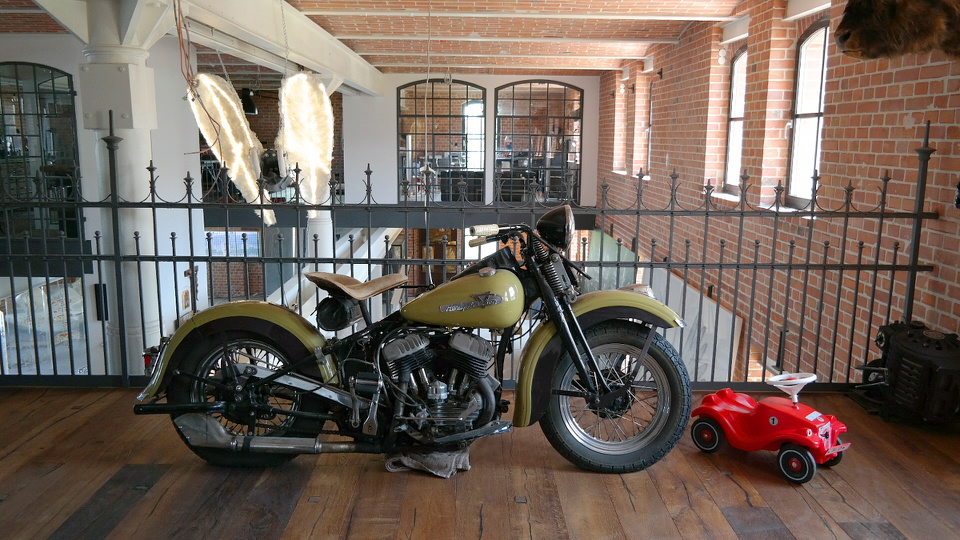
The family fleet: An old Harley beside a Bobbycar
MS: In 2000 you studied fashion and journalism in Hamburg. After that acting in Berlin. Were you not so sure about your artistic ambitions anymore?
MFW: There are some artists like Tracey Eman or Valie Export, that came in a roundabout way to their destination. My mother studied at the renowned Folkwang School in Essen and is a freelance artist and designer. Although she is a great role model, an art school was not an option for me. I wanted my own way. Nevertheless, it was important for me to get an education, to which I can always go back to. So I graduated at the AMD in Hamburg. The study of acting I stopped however, because I quickly realized that I can only work independently.
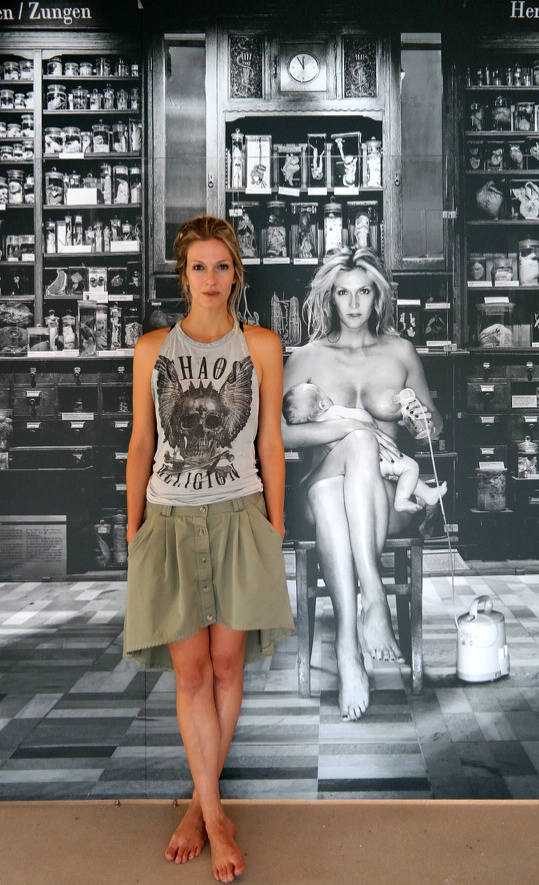
The photographic work was created in the historic pharmacy of the Frankfurt Senckenberg museum in the middle of test tubes with conserved anomalies
MS: You polarize with your art. When I saw the protection shields labeled with your blood in an exhibition, I was a bit scared.
MFW: Statements are part of my work, this includes ambigrams like ‘Love-Hate’. I am not inflationary in words. Only a few words are special, which I express with my blood. It’s not about effects or disgust-art. The worst reaction to my work would be to have no opinion. If someone would say, darling this would fit perfectly in our bedroom or above the couch, then I would have to change a few things.
MS: How much blood you have already processed?
MFW: Over the years there did come together a few liters. In 2006 I had a tank in which I kept the blood. That was a tick from me to always have blood on hand in the refrigerator.
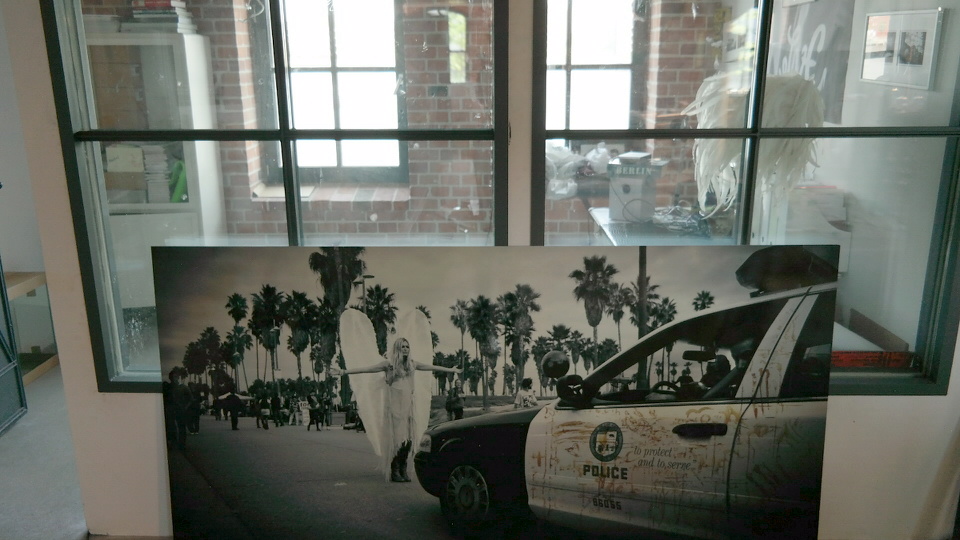
Performance ‘Art Angel’ in Los Angeles with Mia’s blood metaphors on the police car
MS: Art experts often assess artists after their career. They only take artists seriously if they have completed a master class with a renowned artist and have absolved their studying at an eminent academy.
MFW: Warhol, Kienholz, Penck, Nicki de Saint-Phalle, Basquiat and others were no master students. Clear the art academy would have been the classic way, but I always had my own head and ideas.
MS: Are you advise-resistant?
MFW: To the contrary! I’m totally a team player, otherwise my studio world would not work with all my stakeholders. Sometimes a little crazy, but surely also inspiring. (laughs)
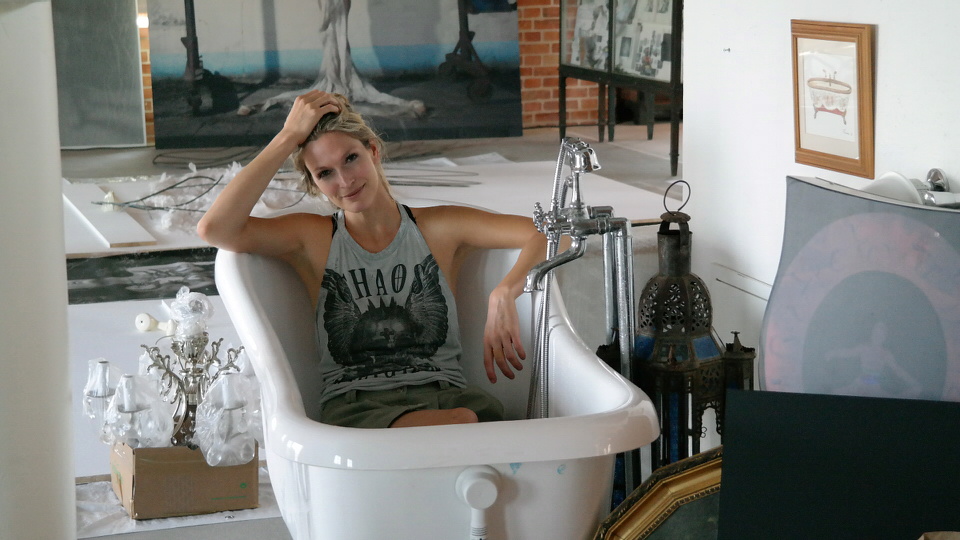
“The Berlin artist Nikolai Makarov has a bathtub in the middle of his kitchen. That inspired me.”
MS: How do you separate living and working? Is there potential for conflict?
MFW: Art is my life. Here we saw an opportunity to combine both. I am responsible for my studio, my husband for his workspace. Eventually he looked at my mess from the top and asked, is this staying that way? And I said, this is likely to get worse.
MS: Since 1 ½ years you live in this wonderful loft that you have rebuilt over the past three years. How did you find your Paradise?
MFW: During a boat ride we discovered it from the water and immediately fell for it. I always wanted to be in the city, my husband did not. This was the compromise.
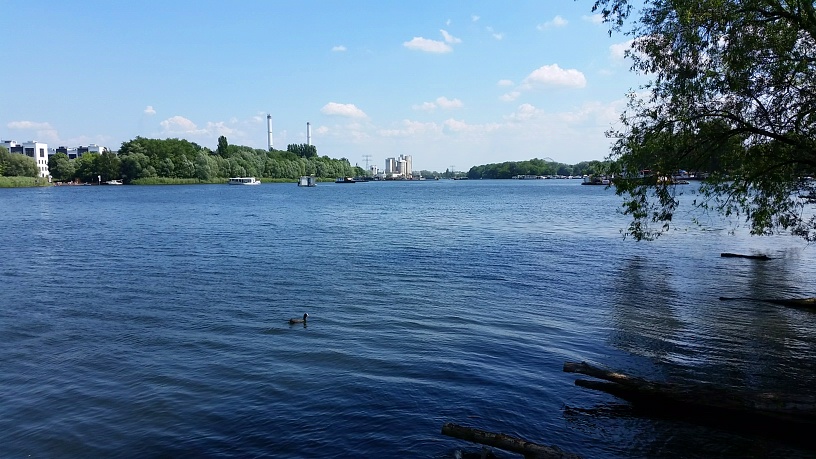
Beautiful view over the Rummelsburger bay
MS: Are you always agreeing on the design, choice of materials and furniture?
MFW: I say it this way: We are still together (laughs). On my flea market finds my husband sometimes reacts a bit skeptical, but then I react that way with his souvenirs from Hongkong, where he lived long. The highlight is the kitchen, which he has built himself. But it is still missing some things, such as lampshades.
MS: But then you have water view from everywhere.
MFW: The other day a friend asked, are you often outside to enjoy the water view? And I realized that I did not even once sit outside. I shift and put off, only the next project, after the catalog, when the exhibition is over. Instead of living in the here and now. I intend to change that now. BvH
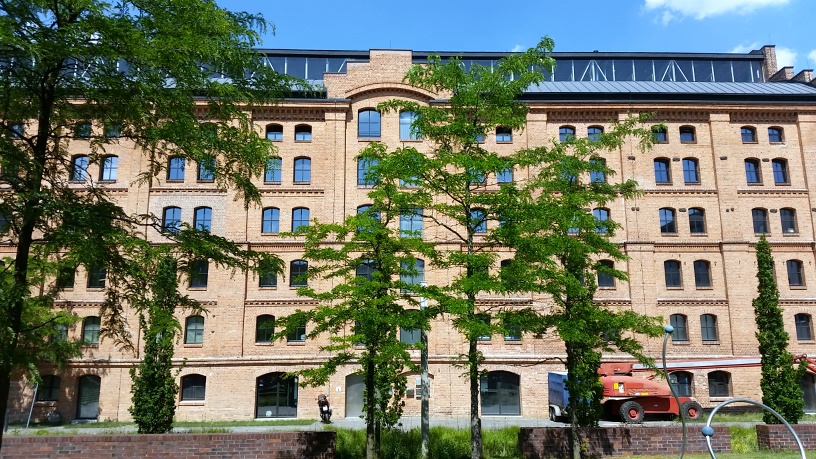
Since 1 ½ years this wonderful former warehouse has become the center of life to Mia and her family
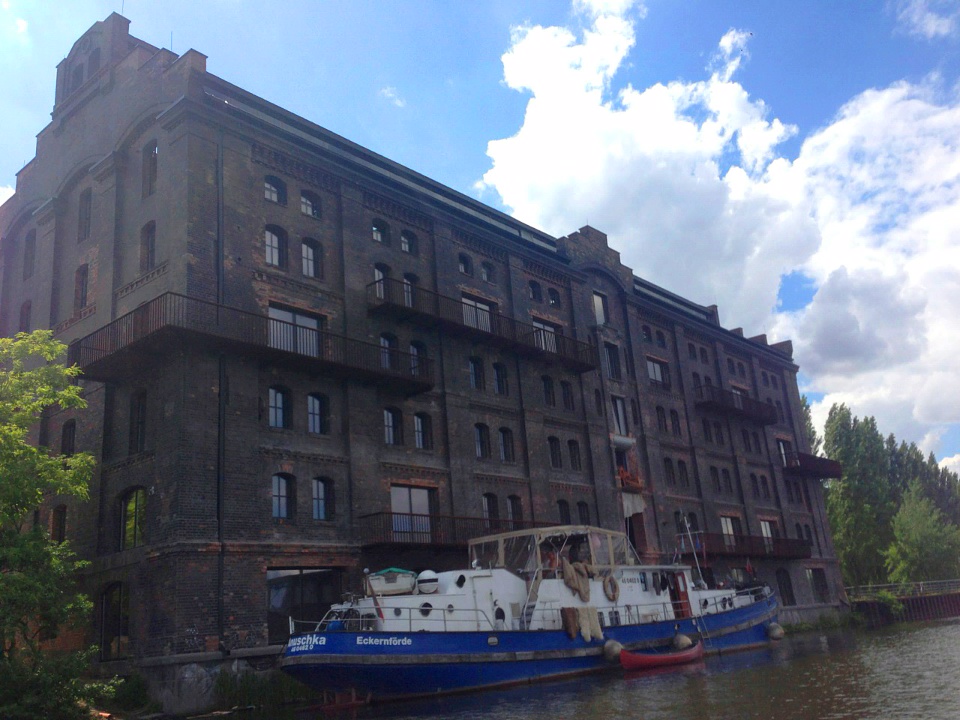
On the boat bridge Mia does yoga regularly. From here you have a wonderful view over the Rummelsburger Bay
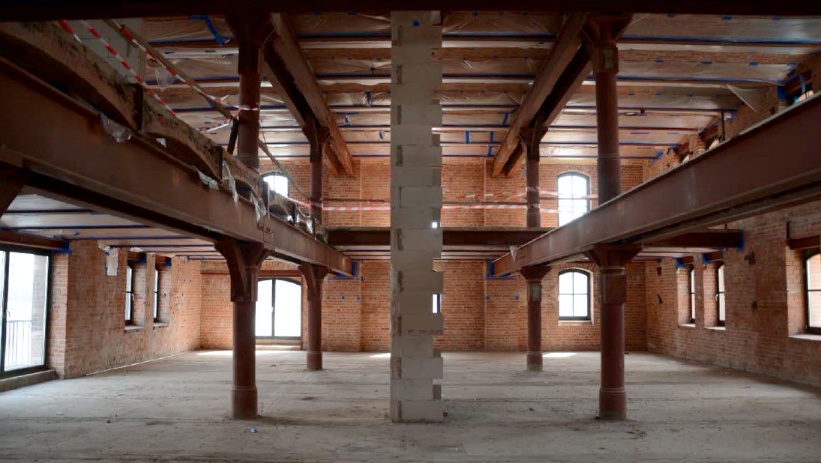
The state of the industrial loft before renovation
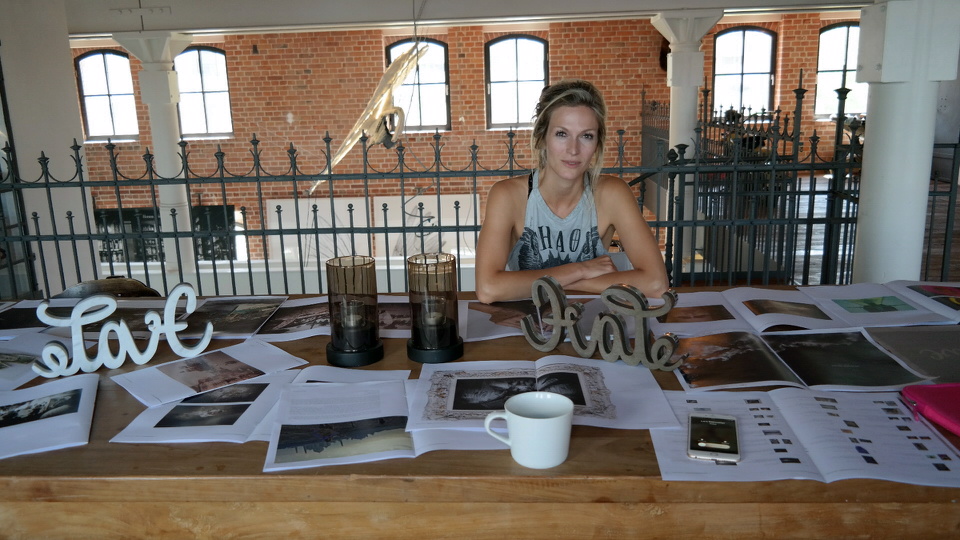
“I often write something on my hand or arm. On an airplane the word ‘love’ on my arm reflected in the window and I saw the word ‘hate’ in it. That was the idea for the Love-Hate Ambigram.”
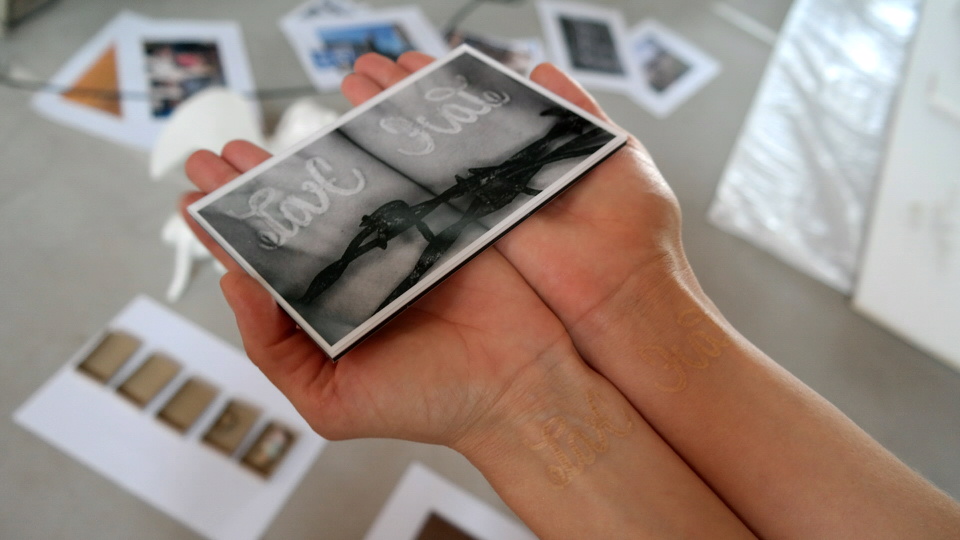
Mia’s wrists decorated with two white tattoos: ‘Love’ on the left hand and ‘hate’ on the right
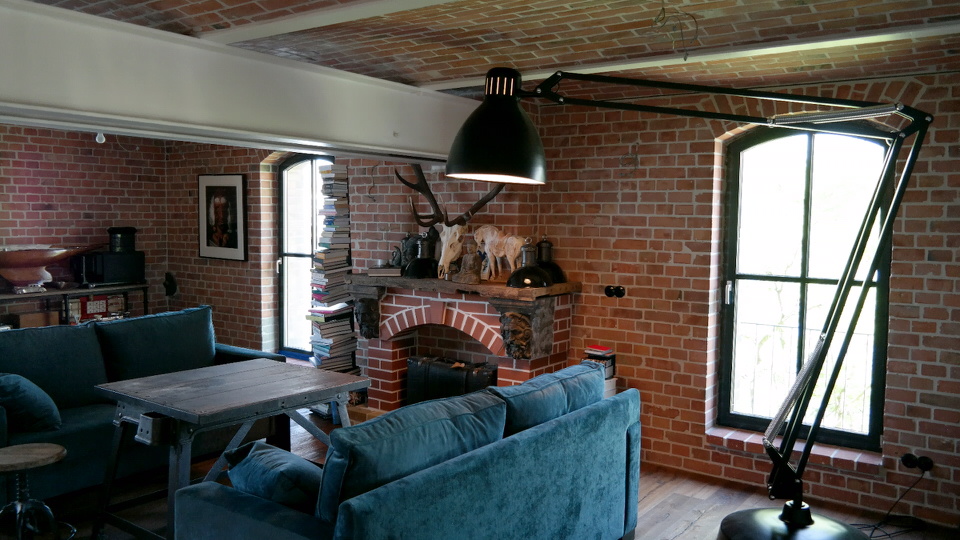
The turquoise sofas by the fireplace are a gift from Mia’s gallery manager
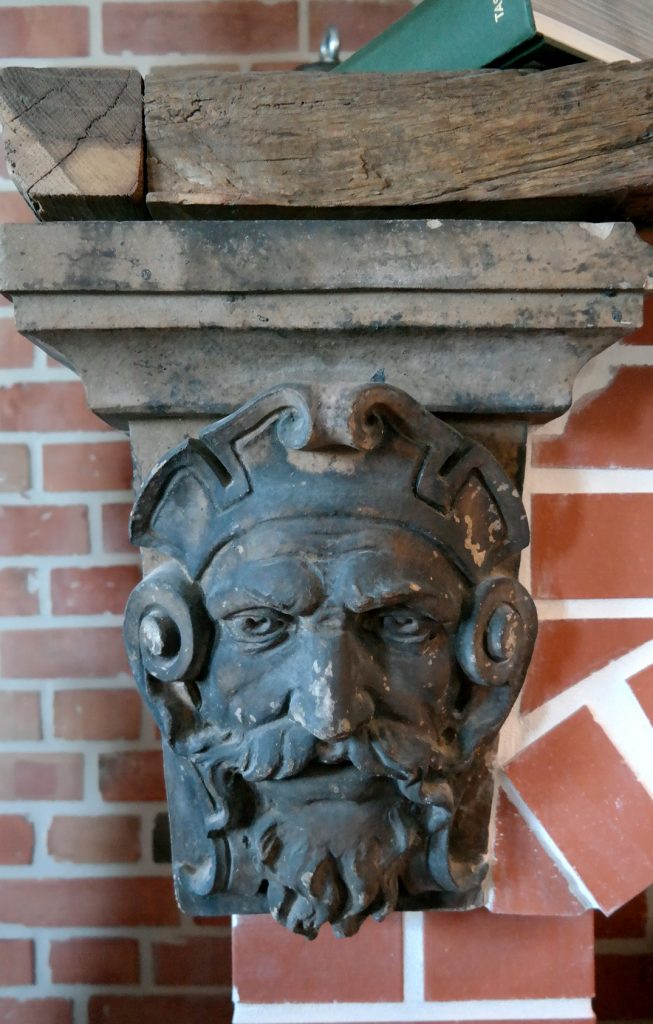
Beautiful detail: The fireplace has Mia’s husband built himself
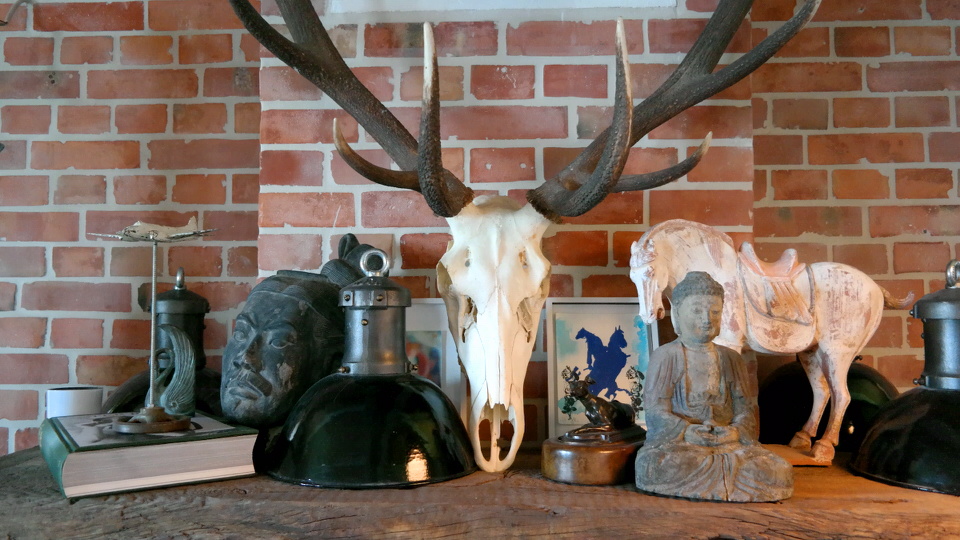
The antlers on the chimney comes from the flea market Porte de Clignancourt in Paris
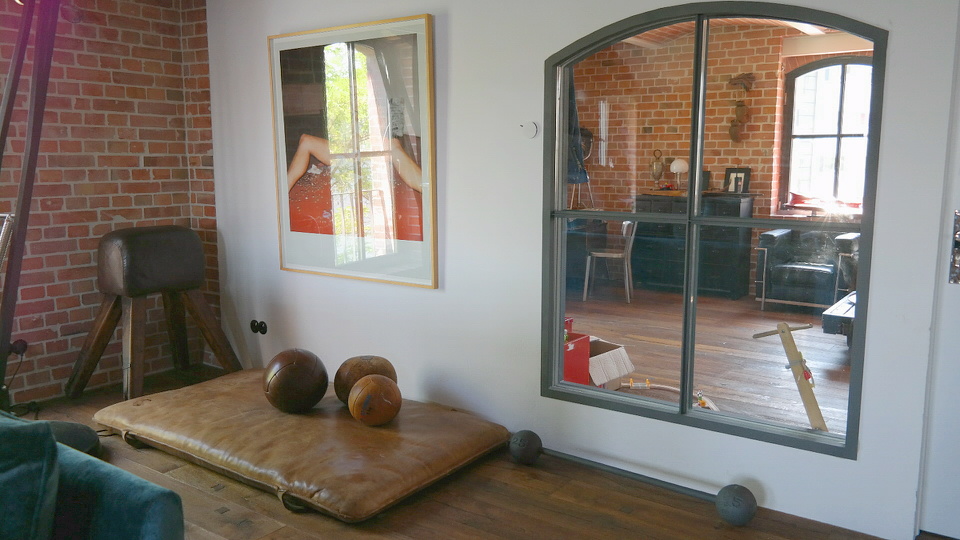
View into the study of Mia’s husband. On the wall is a photograph by Tracey Eman
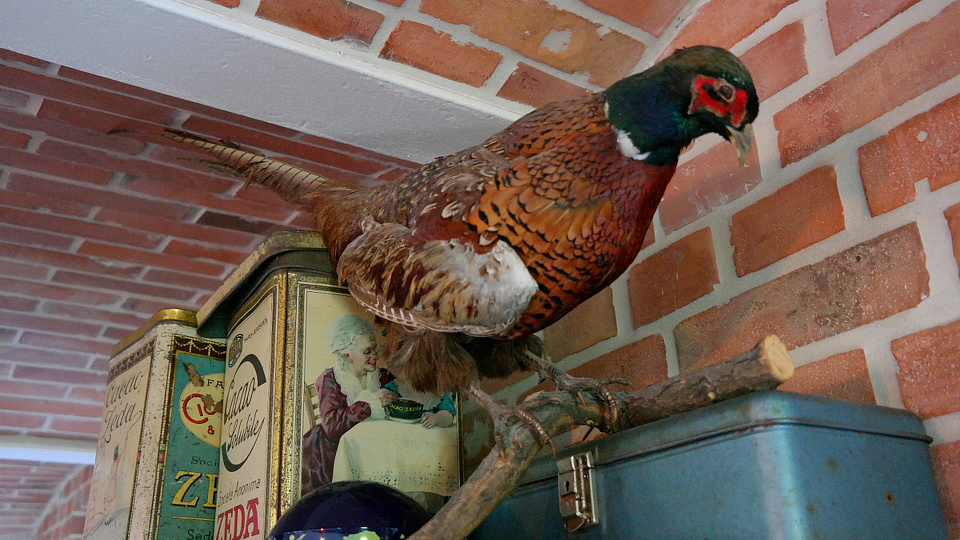
Finds from the flea market
Flea market treasures
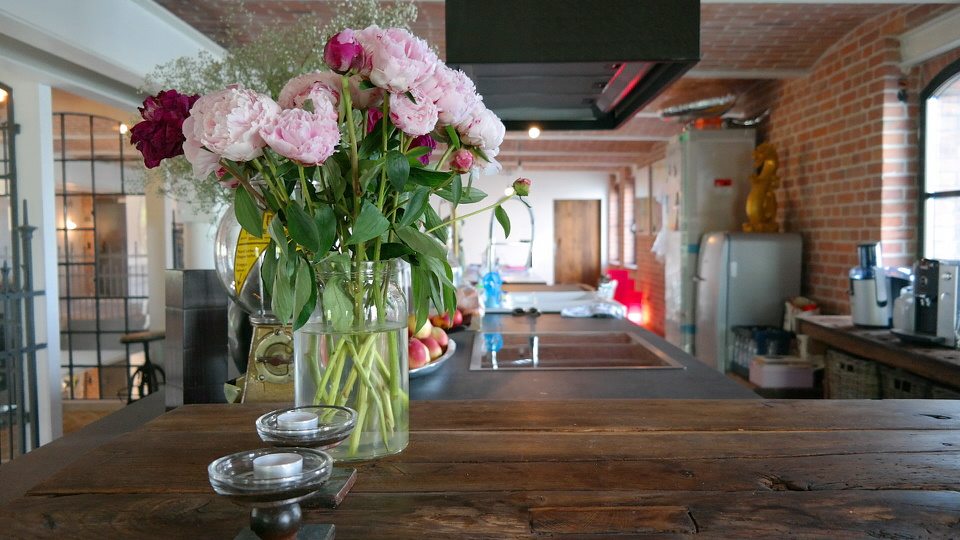
View into the inviting kitchen
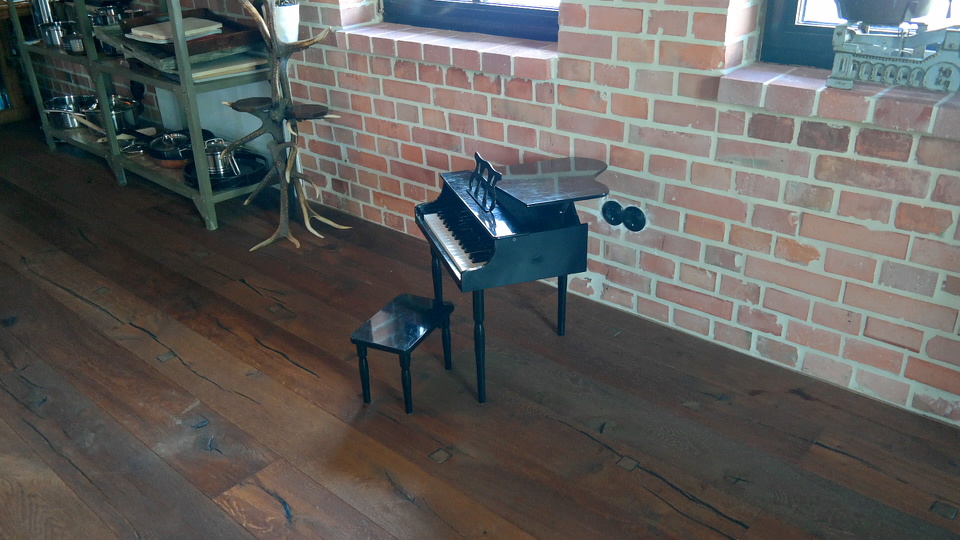
On the piano Mia’s little son exerts in first attempts
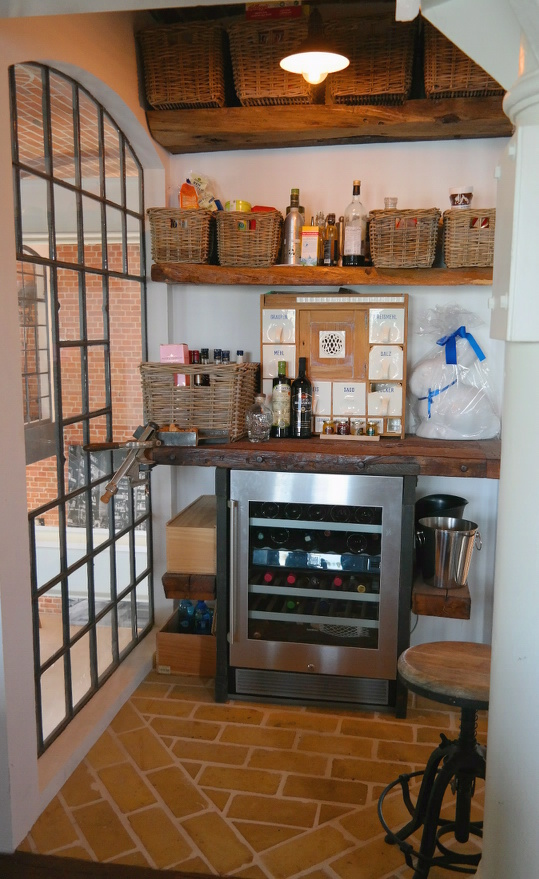
A good place for the wine stock
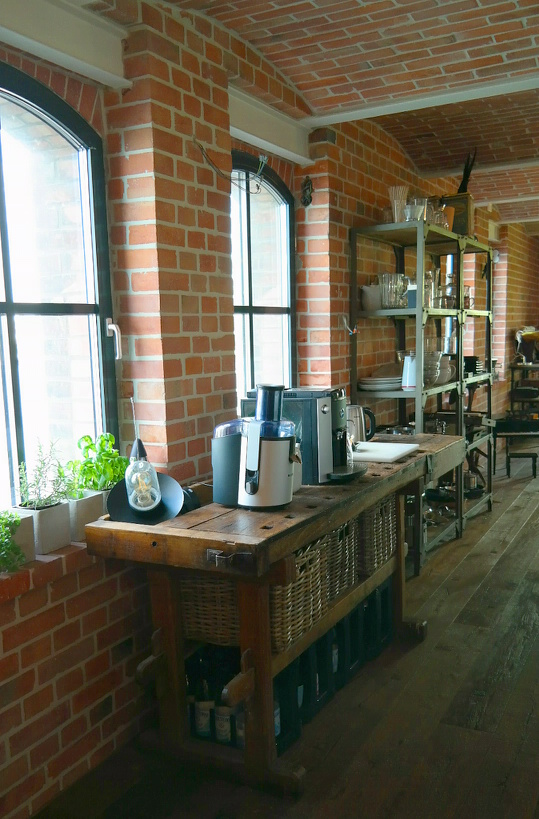
Great idea: An old workbench turns into a kitchen furniture
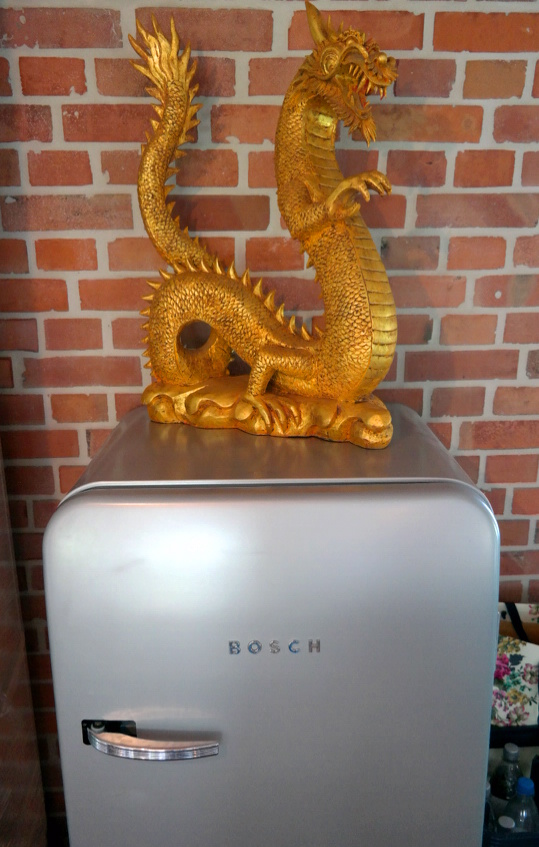
On the fridge memories from Hongkong
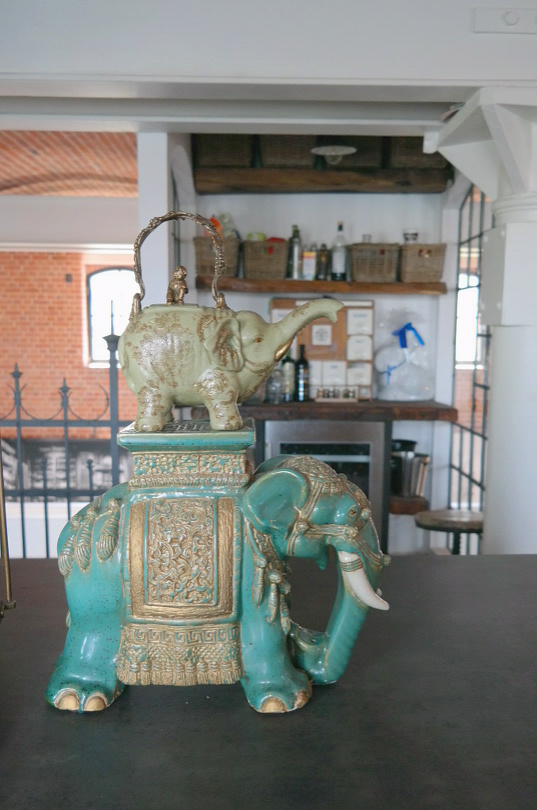
“The elephant teapot I found at the flea market and gave it to my husband as a birthday present.”
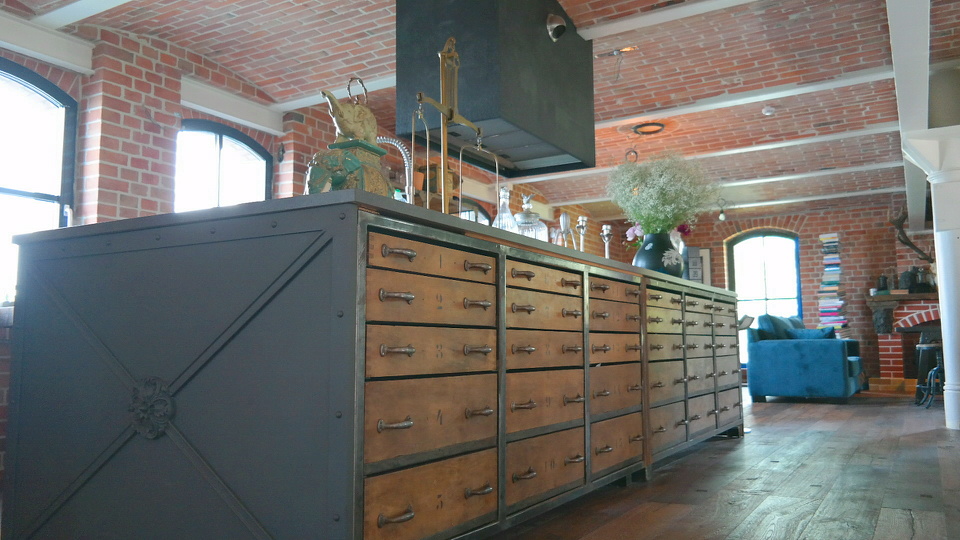
The cuisine is made from old wood and was built by Mia’s husband himself
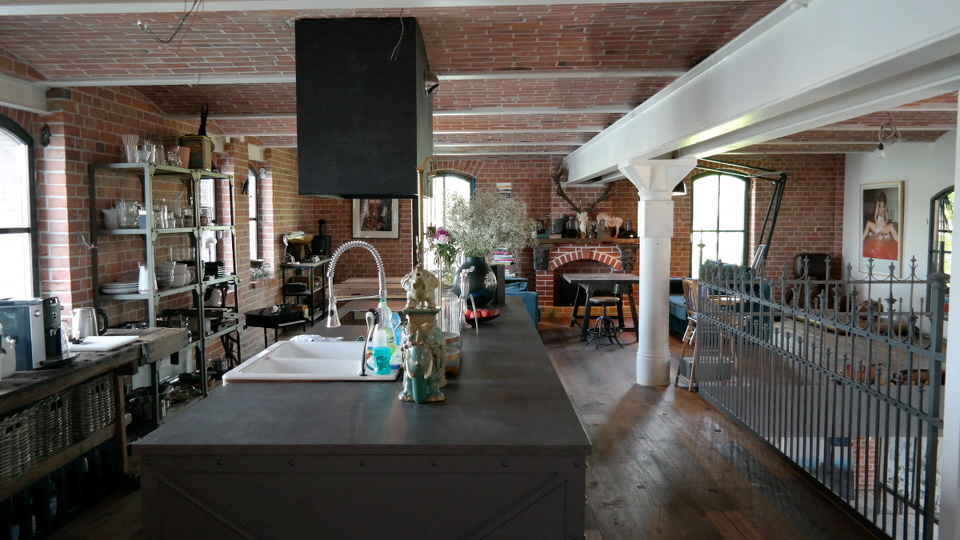
View into the livingroom
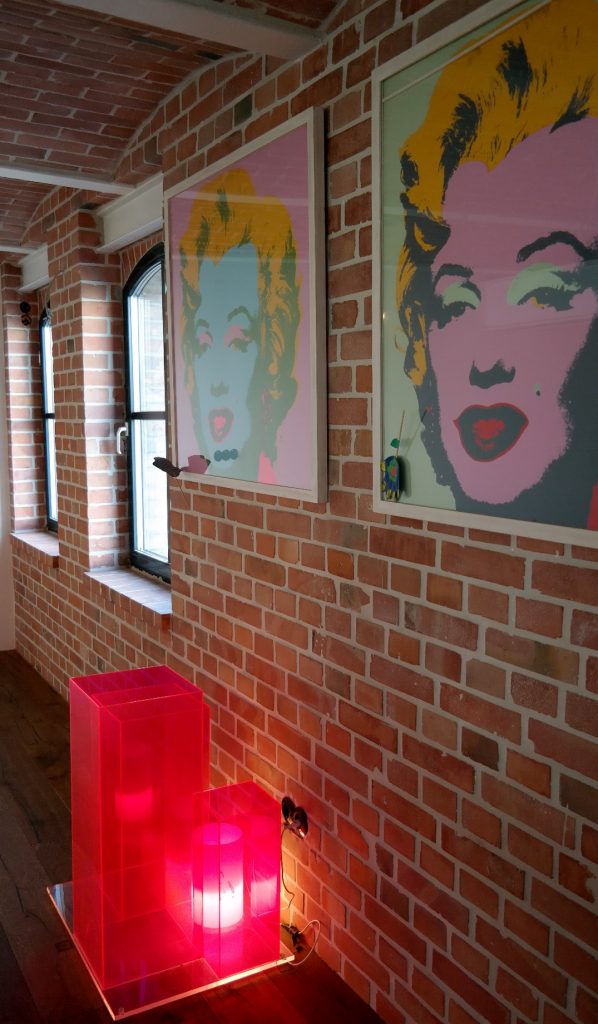
Light object from the Milan ‘Luce’-Collection guarded by two Warhols
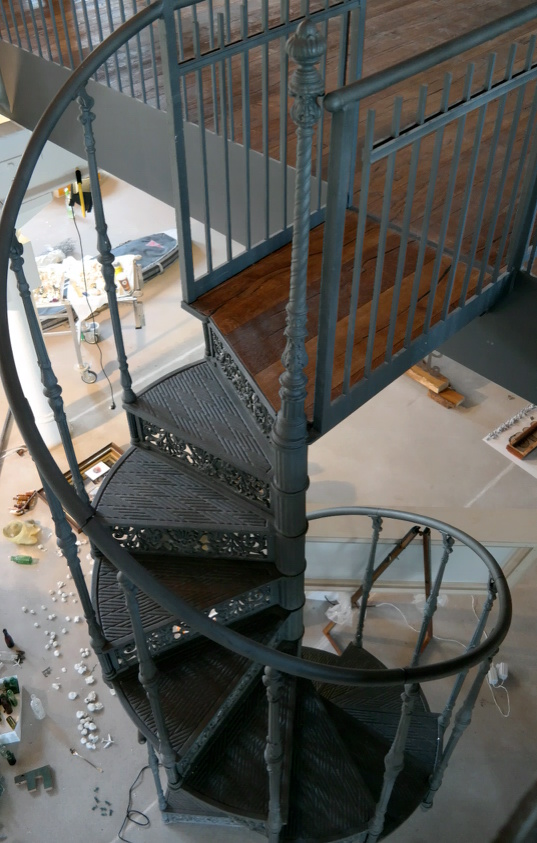
Beautiful staircase: The connection between the living and working areas
A cemetery fence as parapet
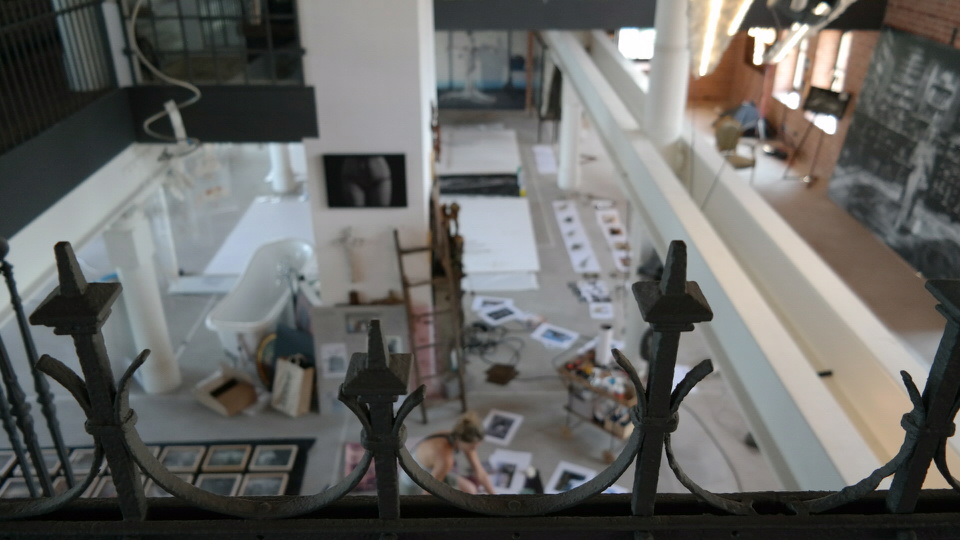
The parapet served formerly as a cemetery fence, which Mia discovered next to the Parisian cemetery Père Lachaise

Mia’s studio seen from above
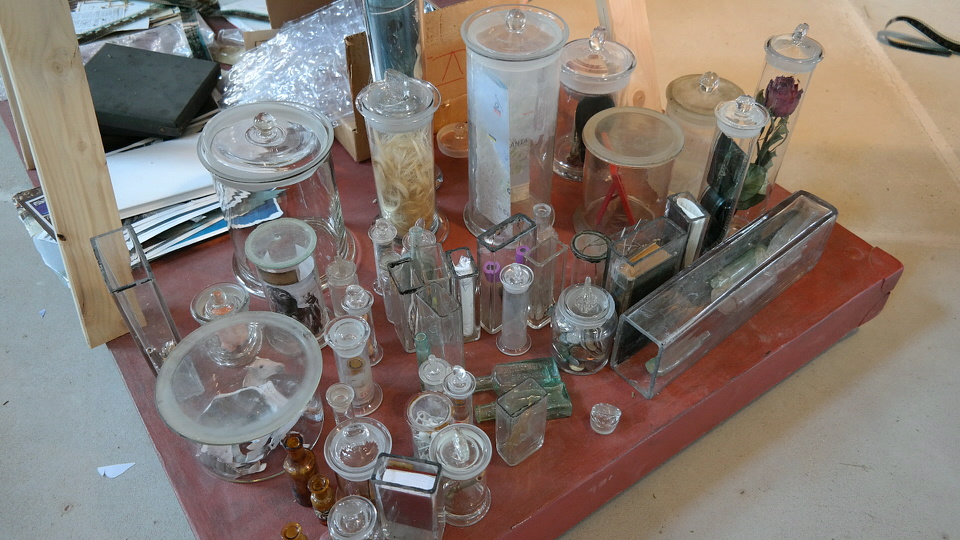
Also this ragbag of glass vessels will be used in Mia’s work …
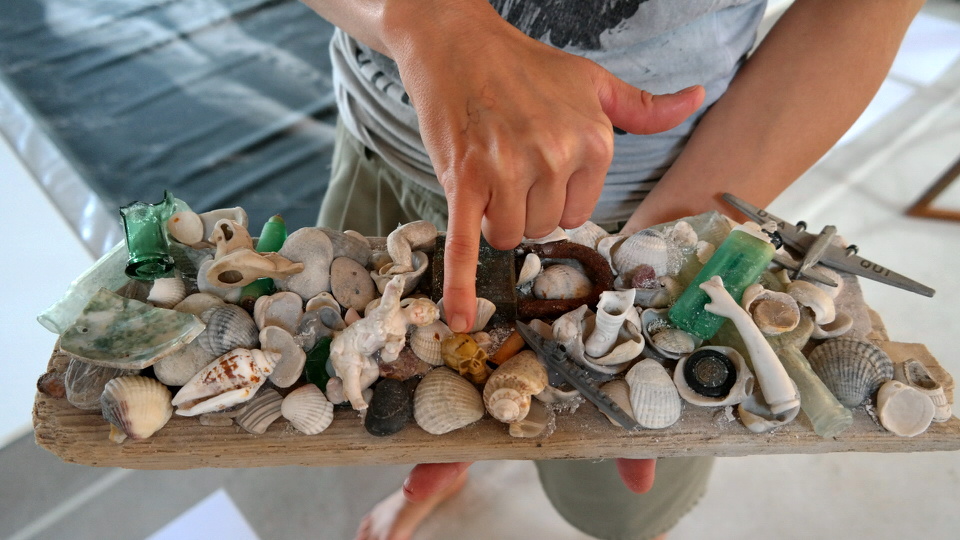
… just as these processed findings
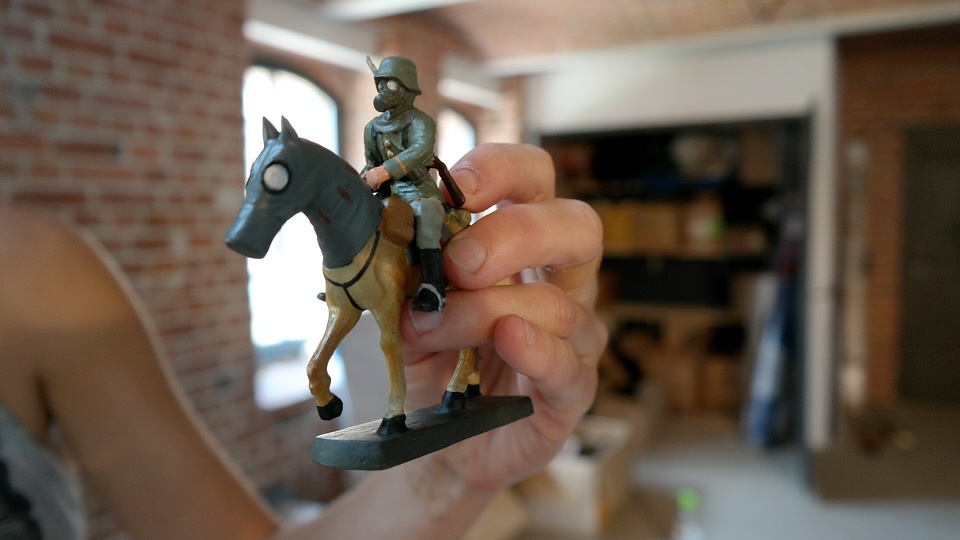
“I have all my contacts who supply me with exceptional and rare finds such as this figure with a gas mask.”
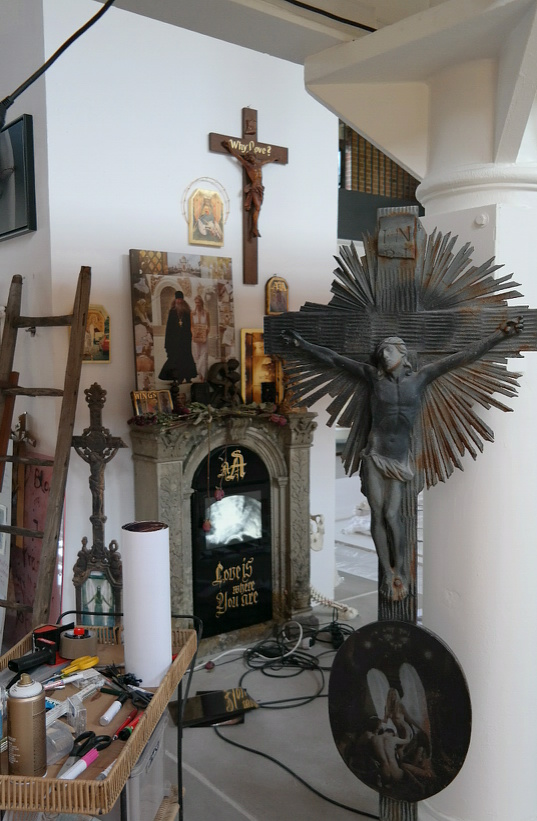
“We do not have many symbols, the heart, skull, wings. However, the cross has the greatest symbolism and is most afflicted by all.”
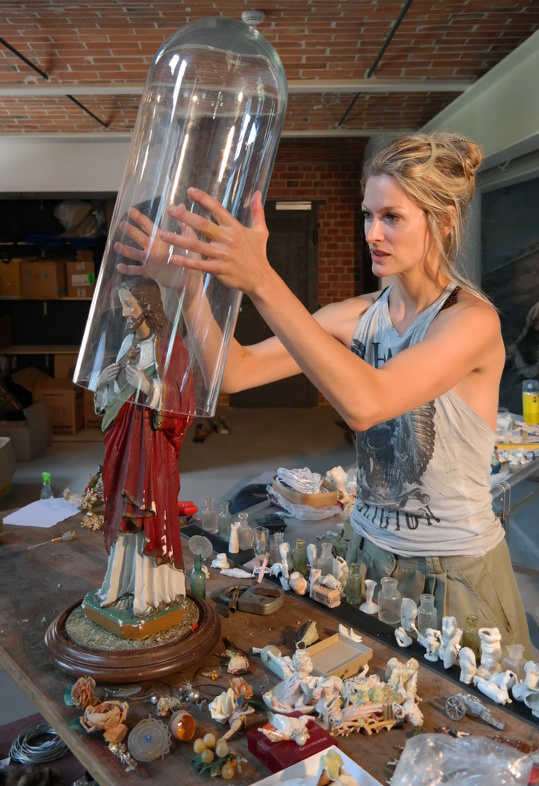
In search of Jesus: “The other day my husband asked me about the Jesus figurine. I said, oh, that is being processed. Meanwhile this is kind off like running gag to us.”
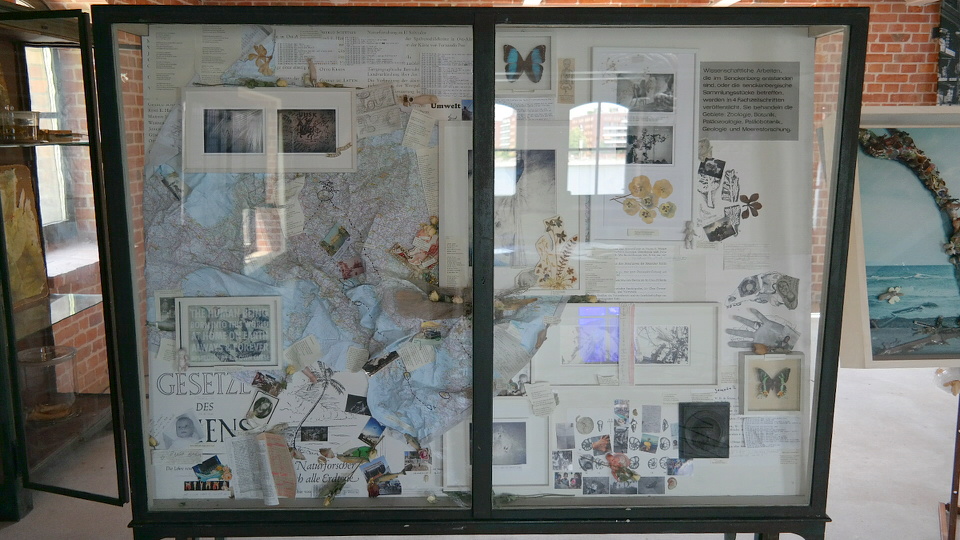
“1 ½ years ago, I have, in collaboration with Pro-asylum for my performance ‘Edges of Europe’ visited various refugee routes …
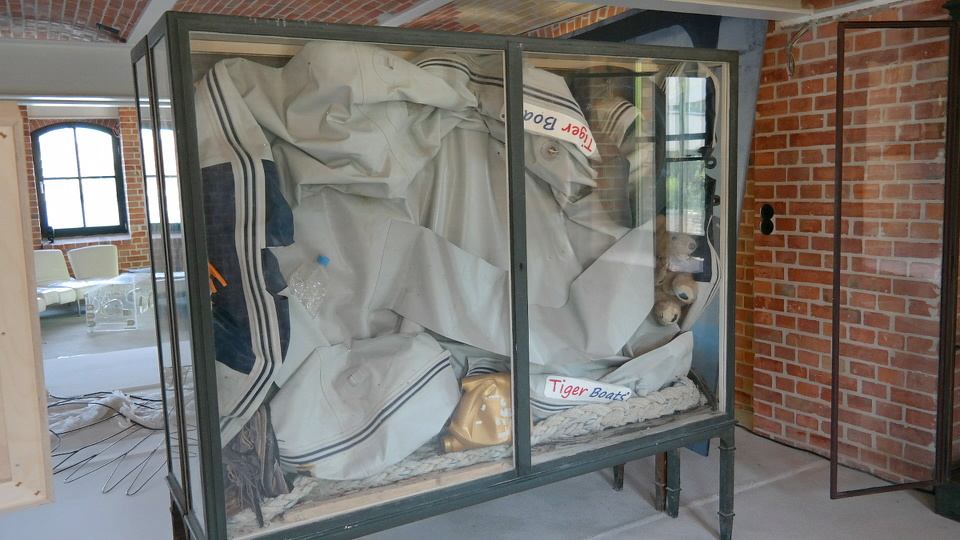
… and found one of those stranded inflatables. That was the idea to create my performative works as assemblage, with the items that I have found to the Greek stalls. The full extent of the refugee disaster we had at that time not yet understood.”
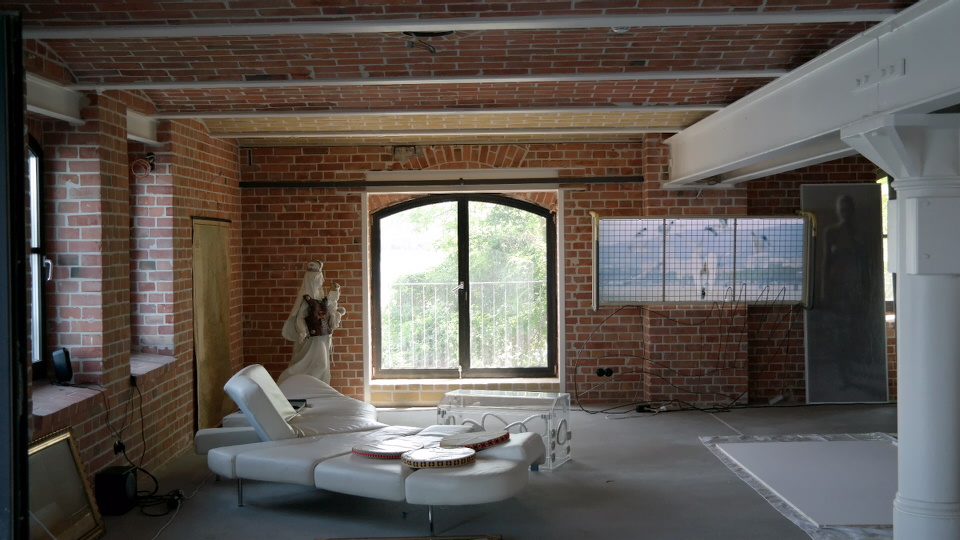
“The Edra Flap sofa in the studio has been with me for many years. Many memories are associated with it.”
Love and Hate
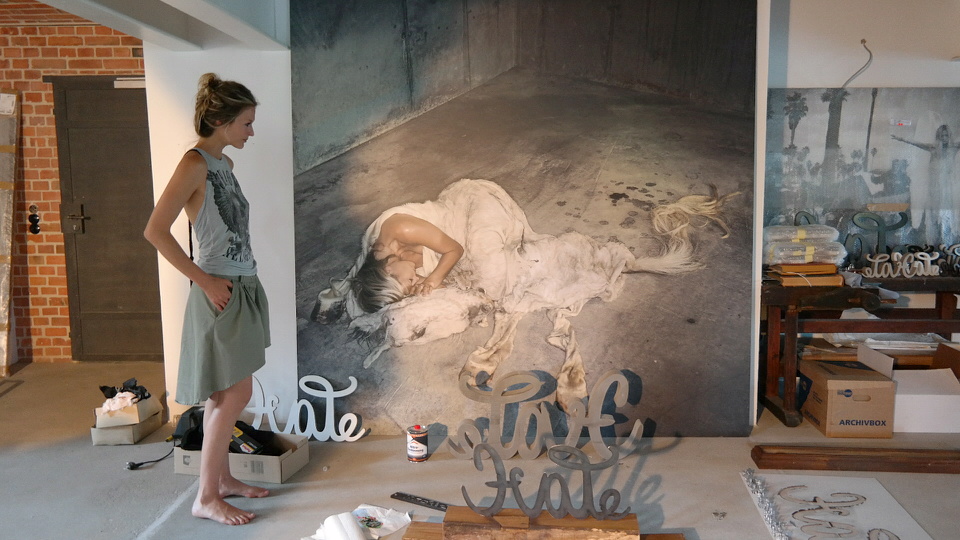
“Before this skin was mounted on the model of Pegasus, it was in the fridge of our Frankfurt studio, which my team didn’t find so funny because it smelled very intensively. So there had to be bought an extra refrigerator. For a performance on the subject of second skin, life and death I have wrapped myself in the skin, which cost me a great overcome. The smell I still have in my nose today.”
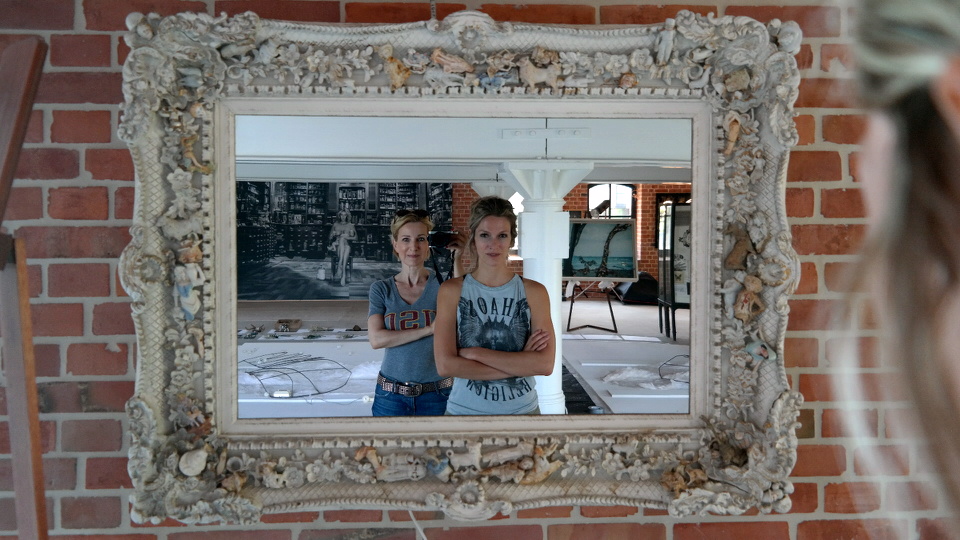
Mia and me!
*Info:
The Cabinet exhibition ‘Wunderkammer‘ runs from June 18 to July 14, 2016 at the Berlin gallery Galerie Friedmann-Hahn. As part of it’s this year’s Global Summit, the organization ‘Human Rights Watch’ at the initiative of US Ambassador wife and ‘Human Rights Watch’-Board Member Kimberly M. Emerson, shows the Pegasus project from 19 to 22 June at the former State Council building (ESMT) in Berlin.


